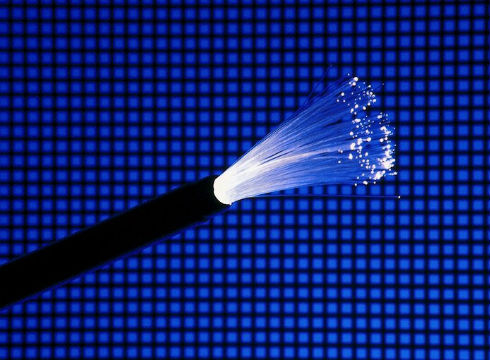Researchers Integrate Electronic Components Into Optical Fibre

Transatlantic team of scientists develop technique which could make communications technology faster, cheaper and more efficient
University of Southampton researchers, working with colleagues at Penn State University, have developed a method to embed an electronic junction into optical fibre.
The technique is a breakthrough in optoelectronics and could potentially make telecommunications systems faster, cheaper and more efficient. In addition, the research creates a new approach for scientists to look at and produce semiconductor junctions.
An electronic hybrid
![]() “The integration of optical fibres and chips is difficult for many reasons,” said John Badding, professor of chemistry at Penn State in a press release. “First, fibres are round and cylindrical, while chips are flat, so simply shaping the connection between the two is a challenge. Another challenge is the alignment of pieces that are so small. An optical fibre is ten times smaller than the width of a human hair. On top of that, there are light-guiding pathways that are built onto chips that are even smaller than the fibres by as much as 100 times, so imagine just trying to line those two devices up.”
“The integration of optical fibres and chips is difficult for many reasons,” said John Badding, professor of chemistry at Penn State in a press release. “First, fibres are round and cylindrical, while chips are flat, so simply shaping the connection between the two is a challenge. Another challenge is the alignment of pieces that are so small. An optical fibre is ten times smaller than the width of a human hair. On top of that, there are light-guiding pathways that are built onto chips that are even smaller than the fibres by as much as 100 times, so imagine just trying to line those two devices up.”
Previously, IBM has done work on optical pathways in silicon chips, and in particular the conversion of signals between optics and electronics, using a nanophotonic avalanche photodetector.
Utilising high-pressure chemistry techniques, the trans-Atlantic team has hybridised the two separate components by depositing semiconducting materials layer by layer into minute holes in optical fibres.
“We have managed to build the junction – the active boundary where all the electronic action takes place – right into the fibre,” says Dr Pier Sazio, senior research fellow in the University of Southampton’s Optoelectronics Research Centre (ORC). A major advantage of this type of chip fabrication, he claims, is that it doesn’t require multimillion dollar clean room facilities, and can instead be produced as part of a cheaper and simpler operation.
“The incorporation of optoelectronic device functionality inside the optical fibre geometry is an important technological advance for future communication networks,” says ORC fellow, Dr Anna Peacock. “In this sense, we can start to imagine a scenario where the data signal never has to leave the fibre for faster, cheaper, more efficient systems.”
The researchers will publish further details of their findings later this month in the Nature Photonics journal.